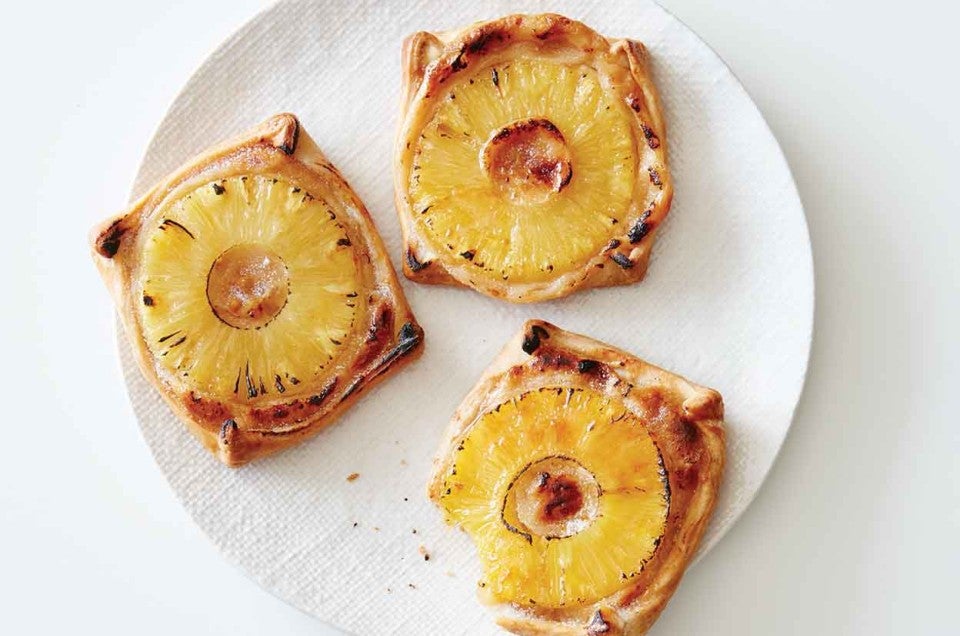A beginner’s guide to baking with miso
The ingredient to use for bolder flavor and layers of umami.


Salt is an essential backbone to desserts — ever-present in doughs and batters to bring balance, or a sharper contrast to sweetness. (I’m looking at you, pecan butter cookies rolled in salt!). But when I want to take that salty-sweet union to the next level, I turn to a tub of miso to deliver umami-sweet for a more complex, rich flavor that goes beyond just salinity.
While miso (fermented soybean paste) is typically associated with soups, dressings, glazes, and sauces with a savory twang, there’s an entire world of cakes, cookies, biscuits, and more just waiting for an umami upgrade. Miso’s flavor can be assertive on its own, but when it’s incorporated into desserts it plays a mellower note. Instead of a prominent flavor, think of miso as a modifier — it complements earthy flavors or cuts through sweetness with its distinct savory presence, especially when compared to a sprinkle of salt. Add it to your baking, and your desserts will never be the same.

There are several different types of miso to choose from, and you can pick which one to use based on your own taste preferences and level of saltiness. The most common options you’ll find at the grocery store are shiro (white, and sometimes labeled as "sweet white miso"), aka (red), and awase (white and red mixed). Shiro has a shorter fermentation time and therefore a less salty, milder flavor when compared to aka’s bolder, more pungent taste (due to longer fermentation). Awase, meanwhile, is like an “all-purpose” happy medium between the two.

As a rule of thumb, pairing miso with earthy, woodsy flavors — think winter squashes like pumpkin, kabocha, and butternut; toasty, nutty flavors like brown butter, sesame, chocolate, and caramel; or hearty fruits like apples and bananas — adds its deep, dynamic flavor without being overpoweringly funky or salty. Additionally, many of the aromatic baking spices we associate with autumnal flavors — like clove, cinnamon, and ginger — are prime contenders to complement miso. On the other hand, it wouldn’t be the best candidate for delicate baked goods with more subtle flavors, like a vanilla cake or sugar cookie.
“Anything earthy or caramelized works beautifully with miso,” notes Mina Park of microbakery 99 in Brooklyn, where she currently offers a kabocha-based cake frosted with a whipped miso-dulce de leche. “I wanted to play on kabocha’s nutty flavor without overpowering it, so I initially tested it with a brown butter [whipped] cream. I later found out that dulce de leche was even better and had the most luxurious texture. Once I incorporated the miso, it was the perfect salty-sweet [balance].”

Using 2 tablespoons (30 grams) of miso per cup of flour when mixing batters and doughs for biscuits, cookies, loaves, and tarts is a good starting point to achieve the right balance, like in these Pineapple Tarts with Ginger-Miso Filling (pictured at the top of this post). When adding it to a recipe that doesn’t initially call for miso, be sure to omit any salt, since it’s one of miso’s main ingredients and will provide enough salt on its own.
Given miso’s thick and sometimes gritty texture, it’s important to mix it in at the right stage of a recipe so you’re left with a silky-smooth batter or dough. Generally, that means you can whisk it into the wet ingredients (like buttermilk or even cream cheese) before they’re incorporated with the dry, or it can be added during the initial creaming stage, when the butter and sugar are mixed together.
Finally, you can always deliver more miso through additional garnishes and drizzles, giving you the benefit of tasting as you go. Think spreadable miso butter, gooey caramel or, in Park’s example, a batch of whipped cream that’s stable enough to frost a cake but would be just as welcome when dolloped over a loaf of banana bread. “It’s important to add the miso in the beginning stages of mixing your whipped cream,” she advises, to ensure it's incorporated properly. “It’s safe to start with 1 tablespoon of [white] miso, then add more if needed.”
Get baking and add miso to the mix with Soft Chocolate Chip Cookies, Rye Banana Bread, Pumpkin Cheesecake Pie, or Apple Muffins.
Cover photo by Mark Weinberg.

